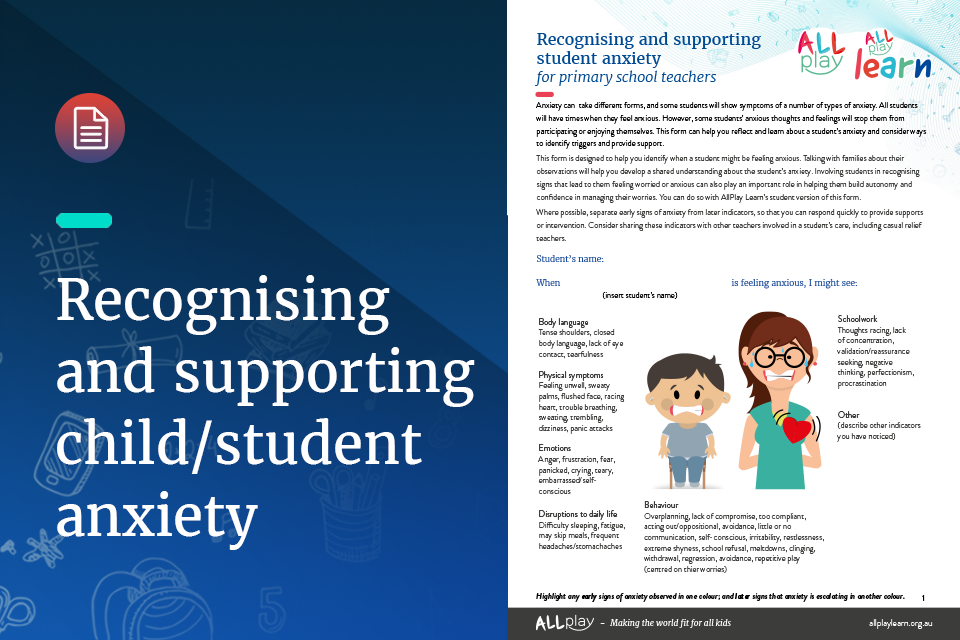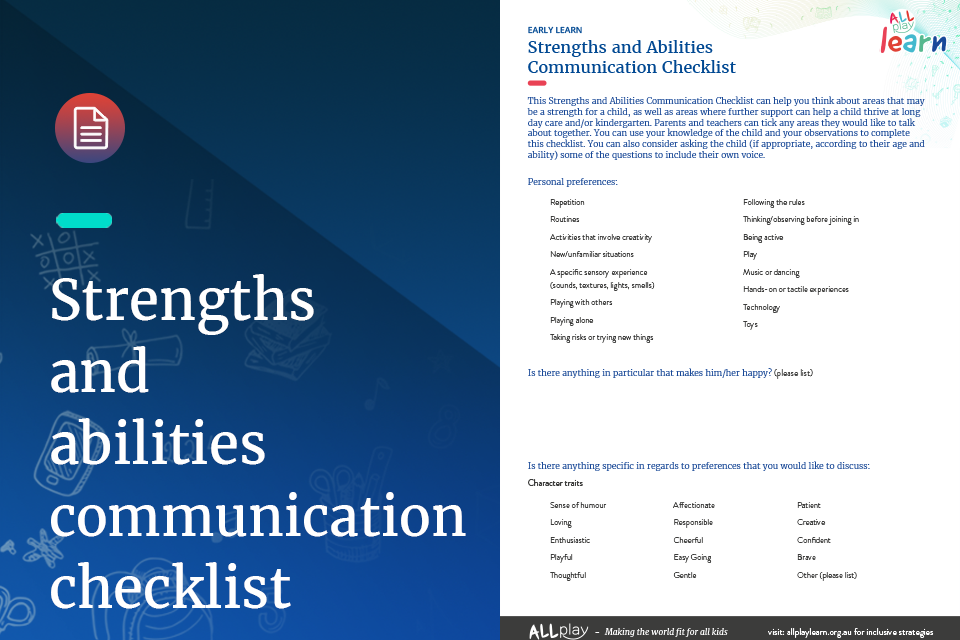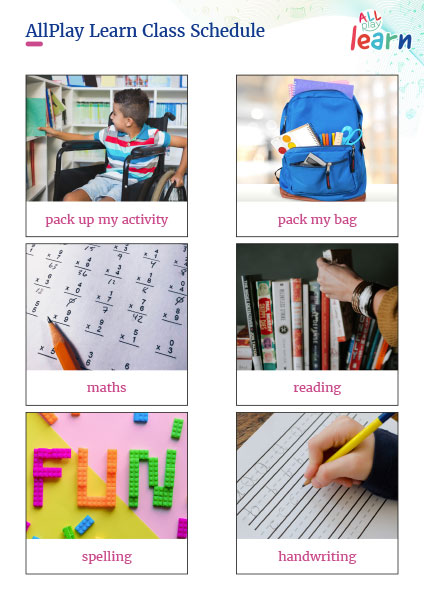
Back to School
Resources
On this page:
Transitions
Information and resources to plan and prepare children and students for positive transitions across various settings, including home, early childhood education and care settings, primary school, secondary school, Year 11 and 12, and post-school education or employment.

Supporting student anxiety
AllPlay Learn’s Recognising and supporting student anxiety forms help educators/teachers, families and students to reflect on:
- a child/student’s early signs that they are feeling anxious
- later signs that their anxiety is escalating
- triggers or contributors to their anxiety
- strategies that may be effective at specific timepoints.

Separation anxiety is the most common form of anxiety in primary school aged children, and can impact their transition and participation at school. In this video, Amanda Dudley describes the signs a child may be experiencing separation anxiety, and the ways in which primary teachers can support children experiencing separation anxiety in educational settings.
A consistent and collaborative approach can help identify why a student may engage in school refusal and which approaches may best to support them. Watch a Masterclass by Associate Professor Glenn Melvin who describes school refusal, and outlines the ways in which primary and secondary teachers can support students engaging in school refusal to return to educational settings.

Classroom
Identifying a child/student’s strengths and abilities can help educators and teachers activate these strengths while applying evidence-based supports that facilitate full participation and engagement in the learning environment. This resource can help facilitate parent-educator communication to identify a child/student’s strengths and abilities.

AllPlay Learn’s schedules can help children/students feel familiar with new routines, as well as to know what is coming up, which may lead to more positive transitions between activities. Some children/students, including children/students with autism or intellectual disability, will identify more closely with the schedules if it contains images from their new learning environment. Our “add your own image” stories allow educators, teachers and families to personalise the schedules.


Class/visual schedules for education settings
Visual schedules for home
If families would like their child’s diagnosis disclosed to their peers, AllPlay Learn’s disability information sheets or activity books can help their peers learn more about how they can be inclusive. These information sheets outline what a specific disability might look like at school, and how students can include a peer with a disability. There is also an information sheet explaining why some students may need reasonable adjustments at school.
Having a clean and organised locker, with a colour-coded timetable and books displayed, can be particularly helpful for students as they adjust to new routines and rules. Some students, including students with ADHD, intellectual disability, or specific learning disabilities, may need explicit teaching and support with organising their locker. AllPlay Learn’s locker tips provides clear steps to organised lockers.


Videos
AllPlay Learn’s videos about family experiences with transitions provide opportunities for educators, teachers and families to learn from the transition journeys of others.

Stories
Read or provide positive stories about the learning environment. These stories show a child/student what happens in their new learning environment. This helps them feel confident about new situations they may encounter and to feel positive about the new situations they may face in these settings. You could show the stories to the children/students during transition and give them some printed copies as a take-home item. Some children/students, including children/students with autism or intellectual disability, will identify more closely with the stories if it contains images of themselves in their new learning environment. Our “add your own image” stories allow educators and teachers to personalise the stories using Microsoft Powerpoint.



